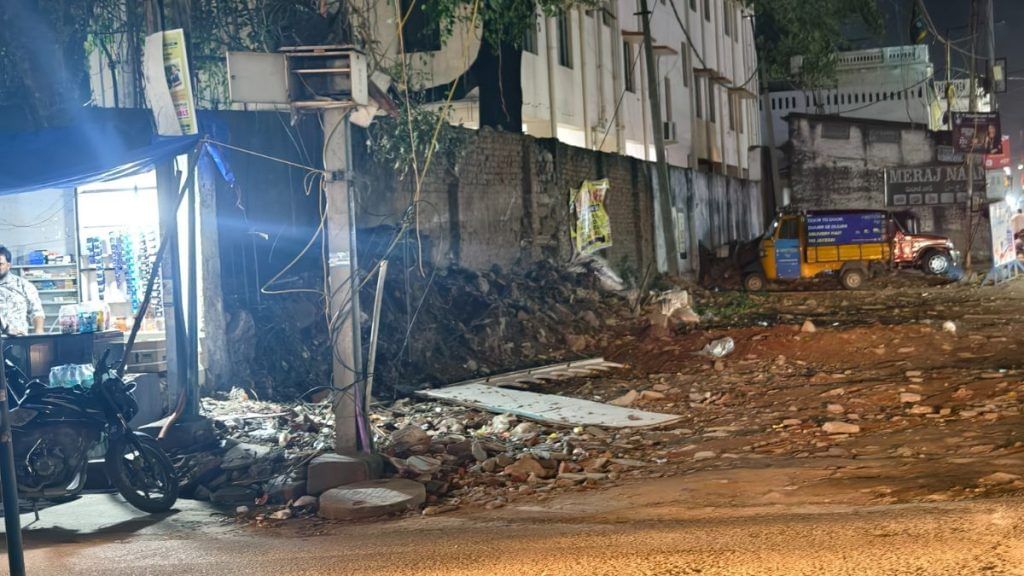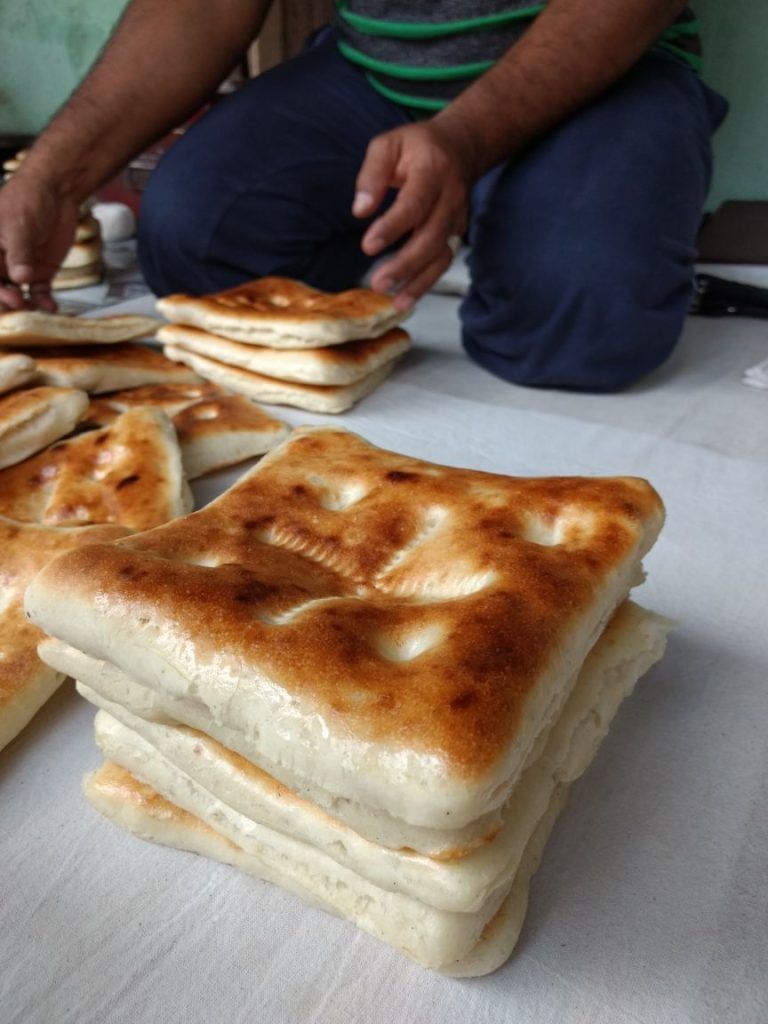Hyderabad: Just like that, another piece of history in Hyderabad has disappeared after 174 years of its existence. The historical establishment Munshi Naan in the Old City area has been demolished to make way for the metro rail.
While the place was earmarked for demolition early this year, the incident came as a surprise to the owners, who claimed that Hyderabad Metro Rail (HMR) authorities went ahead with the demolition on October 12 despite a Telangana High Court hearing, which was yet to decide its fate.
“We had filed a case in the high court just days before the demolition, and our hearing was due in the coming weeks. However, metro rail officials turned up and said that they are going ahead with it. In spite of our protests, they said that unless we show them a stay order, they will not stop their work,” said Abdul Hameed, proprietor of Munshi Naan.

When contacted, HMR officials refused to comment on the demolition. “Fair compensation is given to whoever has given up land,” said a senior official on the condition of anonymity. It may be noted that other establishments preceding Munshi Naan on the same line had been demolished earlier this year.
Located at an intersection on the Purani Haveli Road in the Old City, about a kilometre away from the historic Charminar, Munshi Naan, over the decades, developed into a key landmark in the area and a favourite to hundreds of Hyderabadis who relish the naan from the store.
Hameed said that his family has managed to identify a new location to set up their business in the coming week or so. “We had to obviously find a new place, but we were not expecting it to happen despite the court hearing. The location on the main road was very important,” he told The Print.
The demolition of Munshi Naan has left many unhappy. Its patrons would come from far at times just to pick up their favourite flat bread from the place. “We have been literally going there for four generations, so seeing the empty space there was devastating,” said Syed Hakim, who resides a few kilometres away from the demolished shop.
Also read: Indian farmers are ‘renting’ bees. The cost is stinging
History of the Munshi Naan
The word ‘munshi’ stands for clerk. It was set up in 1851 by Hameed’s ancestor Mohd Hussain, who worked as a clerk in one of the departments of Hyderabad’s fourth Nizam Nasir-ud-Daulah (1829-57). During one of Hussain’s visits to Delhi, he had apparently picked up the technique of making naan dough and then baking it. He then decided to begin a similar process back in Hyderabad.
“Since he was a munshi, it became the name of our shop. We have been using the exact same formula for the dough that we were taught by our grandfather and from before him. We prepare it every night to make sure it is fresh,” said Hameed.
Tourists and visitors who were not accustomed to the sight of fresh naan being prepared in the city used to get attracted to the store for a glimpse of the entire process of kneading the dough and baking it in the tandoor.
The bread at Munshi Naan is square-shaped with small dots or holes. Apart from aesthetic looks, science also plays a crucial role in the design. “The dots are there for air to flow in the naan so that the upper part or surface doesn’t burn while we are baking the dough in the tandoor,” said Hameed.

The naan also has a slight brownish colour on top — a result of jaggery water added on the surface of each piece before it goes into the tandoor. “We put some jaggery water to avoid the naans from getting burnt,” he added.
According to Hameed, what has kept Munshi Naan true to its roots is the family’s refusal to adopt modern baking techniques and machines. Apparently, the 174-year-old establishment does not use yeast while making naan and follows a laborious process of preparing its dough every single day.
“These days, all you have to do is mix yeast, edible oil and salt with all-purpose flour (maida) and a machine, which will do the work for you. We, however, don’t use yeast, but actually prepare dough using mixed curd and maida (and other ingredients). This mixture is hung in a cloth overnight, which we use the next morning. We had tried using a machine once, but it never worked because the naan was not the same,” said Hameed, adding that preparations are on to restart soon at the new location.
Metro rail corridor in Old City
In the second phase, the HMR’s Old City Corridor VI is being developed as an extension of the green line from the MGBS stop to Chandrayangutta deep in the Old City. It is a 7.5-kilometre line from MGBS which travels via Mandi Road over the Darulshifa Junction (near Munshi Naan), Shalibanda Junction, and Falaknuma.
The corridor (line) is also 500 metres away from the famous Salar Jung Museum and Charminar, the names of these places will be part of the stations due to their historical significance, HMR said earlier this year in a press release.
Yunus Lasania is a Hyderabad-based journalist whose work primarily focuses on politics, history and culture. He tweets @YunusLasania.
(Edited by Saptak Datta)






